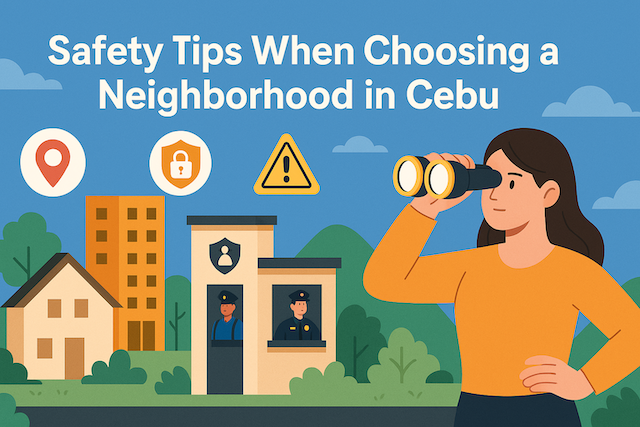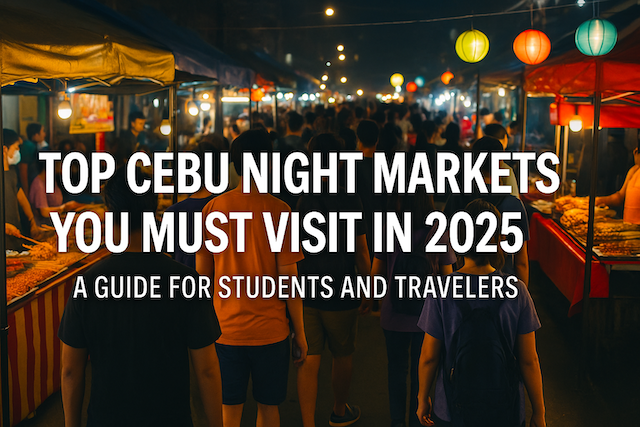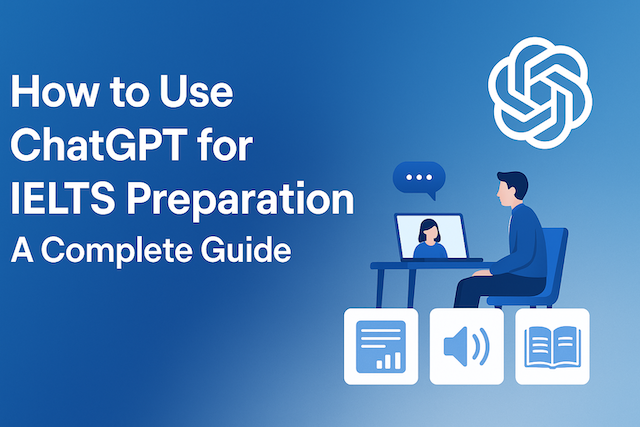Safety Tips When Choosing a Neighborhood in Cebu

Contents
- Safety Tips When Choosing a Neighborhood in Cebu
- Introduction
- 1. Understand the Local Crime Landscape
- 2. Look for Secure Access and Subdivision Boundaries
- 3. Consider Elevation and Flood Risk
- 4. Check Street Lighting and Nighttime Safety
- 5. Proximity to Police and Emergency Services
- 6. Observe the Neighborhood’s Social Activity
- 7. Ask About Noise and Domestic Disturbances
- 8. Check Cell Signal and Internet Coverage
- 9. Look for Nearby Amenities That Enhance Safety
- 10. Read Building Reviews and Talk to Tenants
- 11. Understand the Role of Barangay and Community Watch
- 12. Red Flags That a Neighborhood May Not Be Safe
- 13. Family-Friendly vs. Nightlife-Oriented Areas
- 14. Gated vs Open Communities
- 15. Ask About Security Costs
- Final Thoughts
- Frequently Asked Questions (FAQ)
- 1. What are the safest neighborhoods to live in Cebu?
- 2. How can I check if a neighborhood in Cebu is flood-prone?
- 3. What is a barangay tanod, and how do they help with safety?
- 4. Are gated communities safer than open barangays in Cebu?
- 5. How can I verify if a condo building has good security?
- 6. What’s the safest time of day to visit a potential neighborhood?
- 7. Should I be worried about earthquakes in Cebu?
- 8. Are there emergency hotlines I should know?
- 9. How do I know if a neighborhood is too noisy or has safety concerns?
- 10. Is it safe for solo expats or foreigners to live in downtown Cebu?
- 11. Are properties near universities safe?
- 12. What’s the role of homeowners’ associations in subdivision safety?
- 13. How can I report safety issues in my area?
- 14. Are there areas to avoid when house hunting in Cebu?
- 15. Is Cebu generally a safe city to live in?
Safety Tips When Choosing a Neighborhood in Cebu
Introduction
Choosing the right neighborhood in Cebu isn’t just about finding a beautiful condo or a convenient commute—it’s about safety, stability, and peace of mind. Whether you’re a local family relocating, an expat moving into the city, or a digital nomad seeking long-term housing, understanding neighborhood safety is key to making a smart living decision.
In this guide, we’ll share the most practical and up-to-date safety tips for choosing a neighborhood in Cebu, including crime awareness, natural hazard zones, community factors, and red flags to watch out for—plus recommended safe areas to live in 2025.
1. Understand the Local Crime Landscape
Cebu is generally safer than many other urban centers in Southeast Asia. However, like any city, certain pockets are more prone to crime than others.
️ Common Crimes in Cebu:
-
Petty theft (pickpocketing, bag-snatching)
-
Break-ins or burglary in unsecured areas
-
Scams targeting foreigners or seniors
-
Occasional motorcycle-riding theft (locally known as “riding-in-tandem”)
How to Check Crime Data:
-
Visit the nearest Barangay Hall to inquire about local crime reports
-
Follow local police pages like CCPO (Cebu City Police Office) on Facebook
-
Join local community groups or forums for firsthand insights
-
Ask real estate agents about crime reputation of areas
2. Look for Secure Access and Subdivision Boundaries
Gated subdivisions or secure condominium developments are generally the safest places to live.
What to Look For:
-
24/7 manned security or guards
-
Visitor logbooks and CCTV at entry points
-
Perimeter fencing or walls
-
Proximity to police substations or barangay tanods
Recommended Secure Communities:
-
Maria Luisa Estate Park (Banilad)
-
Pristina North (Talamban)
-
North Town Homes
-
Solinea, 1016 Residences, Park Point (in Cebu Business Park)
-
Mactan Newtown (Lapu-Lapu City)
3. Consider Elevation and Flood Risk
Safety isn’t just about crime. Natural hazards such as flooding can be disruptive and costly.
How to Check:
-
Ask neighbors or admins if flooding occurs during heavy rain
-
Search online for “flood-prone barangays Cebu”
-
Use Google Maps or government hazard maps
Areas to Be Cautious In:
-
Low-lying portions of Mambaling, Colon, Subangdaku, and Pardo
-
Some riverside properties in Tisa and Guadalupe
Safer, Elevated Areas:
-
Beverly Hills Subdivision (Lahug)
-
Busay
-
Banawa
-
Ma. Luisa (upper levels)
4. Check Street Lighting and Nighttime Safety
A beautiful condo by day may feel unsafe after dark if the area lacks lighting or foot traffic.
What to Observe:
-
Walk around the neighborhood after 6:30 PM
-
Are there functioning street lamps?
-
Is there foot traffic or people loitering?
-
Are businesses still open at night?
Poorly lit streets may invite petty crimes or discourage late-night walks, especially for women or solo dwellers.
5. Proximity to Police and Emergency Services
Living within quick reach of law enforcement and hospitals offers peace of mind, especially for families or seniors.
Key Facilities in Cebu:
-
CCPO Headquarters – Camp Sotero Cabahug (Osmeña Blvd.)
-
Cebu City Medical Center (Pahina Central)
-
Chong Hua Hospital (Capitol)
-
UCMed and Cebu Doctors’ Hospital
Being within 10–15 minutes of a hospital or police outpost is ideal in case of emergencies.
6. Observe the Neighborhood’s Social Activity
Safety is often tied to community dynamics. A place with tight-knit residents and active homeowner associations tends to deter crime.
Good Signs:
-
Visible neighborhood watch or “tanod” patrols
-
Children playing outside or jogging in groups
-
Posted reminders or house rules at gates
-
Clean sidewalks, well-maintained greenery
A community that takes pride in its upkeep is more likely to be safe and harmonious.
7. Ask About Noise and Domestic Disturbances
Safety isn’t only physical—it’s psychological. Repeated domestic disputes or rowdy neighbors can make a place feel unsafe even if crime is low.
Tips:
-
Visit on different days (weekend vs weekday)
-
Listen for excessive noise or street drinking
-
Talk to long-time residents or security guards for honest feedback
Avoid units right next to bars, karaoke spots, or basketball courts unless soundproofed.
8. Check Cell Signal and Internet Coverage
In case of emergencies, you need to stay connected. Some hilly or concrete-dense areas have weak cellular signals or slow fiber coverage.
Solutions:
-
Test your phone’s signal at different spots
-
Ask your ISP if the area is fiber-ready
-
Look for condos with built-in backup generators and Wi-Fi
9. Look for Nearby Amenities That Enhance Safety
Areas with well-lit malls, open cafés, gyms, and coworking spaces tend to be safer thanks to high foot traffic and surveillance.
Nearby Features That Help:
-
24/7 convenience stores (7-Eleven, Ministop)
-
Banks and ATMs
-
Well-patrolled malls (Ayala, SM, BTC)
-
Gyms or sports centers (which attract active community)
Being within a 5–10 minute walk from these adds a layer of daily security and convenience.
10. Read Building Reviews and Talk to Tenants
In the age of the internet, you don’t have to guess how safe a building or neighborhood is—just ask online.
Where to Check:
-
Facebook groups: “Cebu Rent/Buy/Sell”, “Expats in Cebu”
-
Property review platforms like Rentpad, Lamudi, and Dotproperty
-
Talk to unit owners or renters via Facebook Marketplace
Ask about past incidents, how responsive management is to issues, and how the neighborhood handles security concerns.
11. Understand the Role of Barangay and Community Watch
Cebu’s barangay (village-level government) plays a direct role in public safety through the presence of tanods (barangay watchmen) who patrol day and night.
Red Flags:
-
No visible barangay hall or unclear tanod presence
-
Residents express distrust in local leaders
-
Past incidents handled poorly or without follow-up
Check if the area has regular “pulong-pulong” (community meetings) to foster transparency.
12. Red Flags That a Neighborhood May Not Be Safe
Avoid areas where you notice:
-
Vandalism or graffiti
-
Broken fences, overgrown lots, or abandoned buildings
-
Excessive loitering or alcohol consumption in public
-
Heavy police presence or road checkpoints (could indicate crime activity)
If you don’t feel comfortable walking around during the day—trust your instincts.
13. Family-Friendly vs. Nightlife-Oriented Areas
Cebu’s neighborhoods vary greatly in character. Some are great for raising kids, others are better suited to singles or young professionals.
| Area | Best For | Safety Score (1–10) |
|---|---|---|
| Banilad | Families, expats | 9 |
| IT Park | Young professionals | 8 |
| Mactan Newtown | Retirees, families | 8 |
| Guadalupe | Budget-conscious locals | 6–7 |
| Colon | Backpackers, students | 5 |
| Talisay | Local families | 7 |
Choose based on your lifestyle and whether you’re more active during the day or at night.
14. Gated vs Open Communities
| Feature | Gated Subdivisions | Open Barangays |
|---|---|---|
| Access control | Strict, with guards | Free access |
| Visitor monitoring | Yes | No |
| HOA management | Usually active | Varies |
| Ideal for | Families, expats | Budget renters, locals |
| Security level | Higher | Moderate to low |
While open communities offer affordability and cultural richness, gated communities provide structure and peace of mind.
15. Ask About Security Costs
In gated communities or condos, you may pay association dues that cover security and maintenance. Be sure to ask:
-
What the monthly dues include
-
Whether guards are full-time or rotating
-
If there are emergency protocols or panic buttons in place
In some private apartments, you may need to hire your own security, especially for large homes.
Final Thoughts
Choosing a safe neighborhood in Cebu isn’t about paranoia—it’s about informed decisions. By evaluating factors like flood risk, crime reports, community engagement, and infrastructure, you can protect your investment, your well-being, and your family’s peace of mind.
Whether you’re renting a studio near IT Park or buying a family home in Banilad, the key is to research, visit, and trust your gut. Safety may not always be obvious on a brochure, but with a trained eye—and the right questions—it’s possible to find a secure and welcoming home in the heart of Cebu.
Frequently Asked Questions (FAQ)
1. What are the safest neighborhoods to live in Cebu?
Some of the safest neighborhoods include Banilad, Maria Luisa Estate Park, Pristina North, IT Park, and Cebu Business Park. These areas typically offer gated communities, 24/7 security, proximity to police stations, and well-maintained surroundings.
2. How can I check if a neighborhood in Cebu is flood-prone?
You can check for flood risk by:
- Consulting government hazard maps (e.g., HazardHunterPH)
- Asking neighbors or property agents about past flooding
- Looking for signs like elevated floors, sandbags, or flood markers near the area
3. What is a barangay tanod, and how do they help with safety?
A barangay tanod is a local community watch volunteer who helps maintain peace and order within a barangay. They patrol streets, assist in disputes, and report crimes to police. A barangay with active tanods and regular patrols tends to be safer.
4. Are gated communities safer than open barangays in Cebu?
Generally, yes. Gated communities offer controlled access, security guards, visitor monitoring, and often CCTV. Open barangays vary in security and are more accessible to the public, which can pose safety challenges depending on the area.
5. How can I verify if a condo building has good security?
Before renting or buying, ask the admin office about:
- 24/7 guard presence
- CCTV coverage
- Visitor registration system
- Incident response protocols
You can also talk to current residents or search for online reviews.
6. What’s the safest time of day to visit a potential neighborhood?
Visit during early morning and after sunset to assess both daytime activity and nighttime safety. Look for working streetlights, active community presence, and whether you feel safe walking around.
7. Should I be worried about earthquakes in Cebu?
Cebu is not as seismically active as other parts of the Philippines, but mild earthquakes can occur. Buildings constructed after 2010 generally follow structural safety codes. Ask your agent about the age and earthquake resistance of the structure.
8. Are there emergency hotlines I should know?
Yes. Key Cebu emergency numbers:
- Police: 911 or (032) 233-6646
- Fire: 160
- Medical Emergency: (032) 254-4081 (Cebu City Medical Center)
- Barangay Hotline: Ask local officials for the nearest contact
9. How do I know if a neighborhood is too noisy or has safety concerns?
Visit at different times (especially weekends) and talk to nearby tenants or security guards. Excessive noise, frequent drunk gatherings, or street loitering can be red flags. Online forums and Facebook groups also help gather local insight.
10. Is it safe for solo expats or foreigners to live in downtown Cebu?
Downtown areas like Colon or Pasil have affordable housing but are not ideal for solo foreigners due to higher petty crime rates. Safer alternatives for expats include IT Park, Banilad, Lahug, and CBP.
11. Are properties near universities safe?
Areas near schools and universities like **Lahug** or **Talamban** can be safe, especially during the day. However, some may experience noise or pickpocketing at night due to student nightlife. Look for well-lit streets and active barangay watch.
12. What’s the role of homeowners’ associations in subdivision safety?
An active HOA often organizes:
- Night patrols or tanod shifts
- Security camera maintenance
- Visitor pass systems
- Emergency drills or alerts
Choose subdivisions with responsive and transparent HOAs.
13. How can I report safety issues in my area?
You can report issues to your barangay hall, call the police (911), or post in community watch groups. Many barangays also respond to complaints via Facebook pages. Always document the problem with photos if needed.
14. Are there areas to avoid when house hunting in Cebu?
Areas like **Colon, Duljo, and Pasil** are known for higher crime rates and frequent flooding. These locations may be affordable but come with risks. Always balance cost savings with peace of mind.
15. Is Cebu generally a safe city to live in?
Yes, Cebu is considered one of the safer urban centers in the Philippines. While it’s not without petty crime or local risks, choosing a secure neighborhood, staying alert, and integrating with the community will go a long way in keeping you safe.




